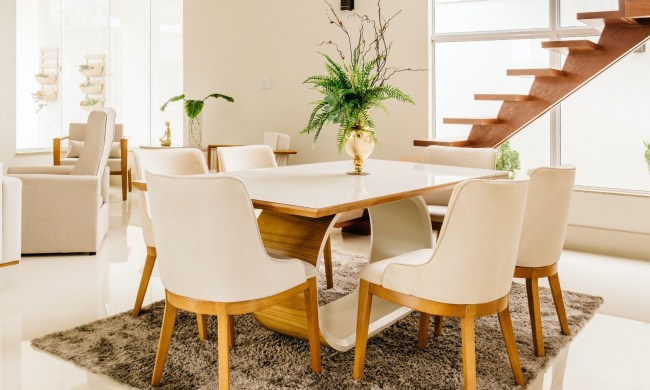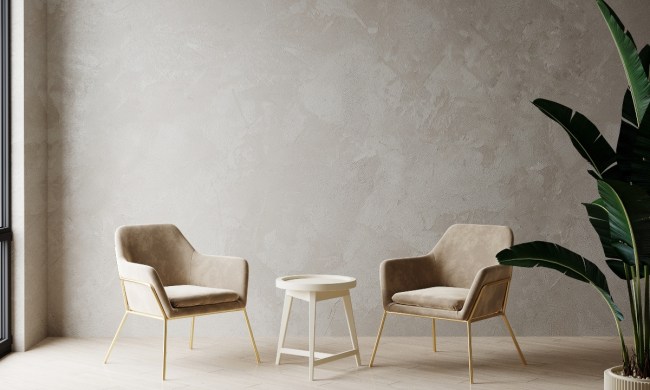Color psychology tells us many things about how we’re influenced by what we see. Culture aside, most colors trigger similar psychological reactions in people. Some colors agitate or excite while others calm and pacify, putting you in a relaxed mindset. So, what color helps you sleep?
You can use light colors in several ways, from helping you design a room or aesthetic to altering the ambiance in the space, depending on your mood. For example, even if you don’t choose a specific light color, certain bulbs, like incandescents or fluorescents, have their own warm or cold light. These dramatically change the way a room feels.
Here is some insight into which light colors to choose if you want calm zen to relax and fall asleep fast every night. Read on to find out what color light helps you sleep — and which one doesn’t.
What light color helps you sleep (and which keeps you up)?
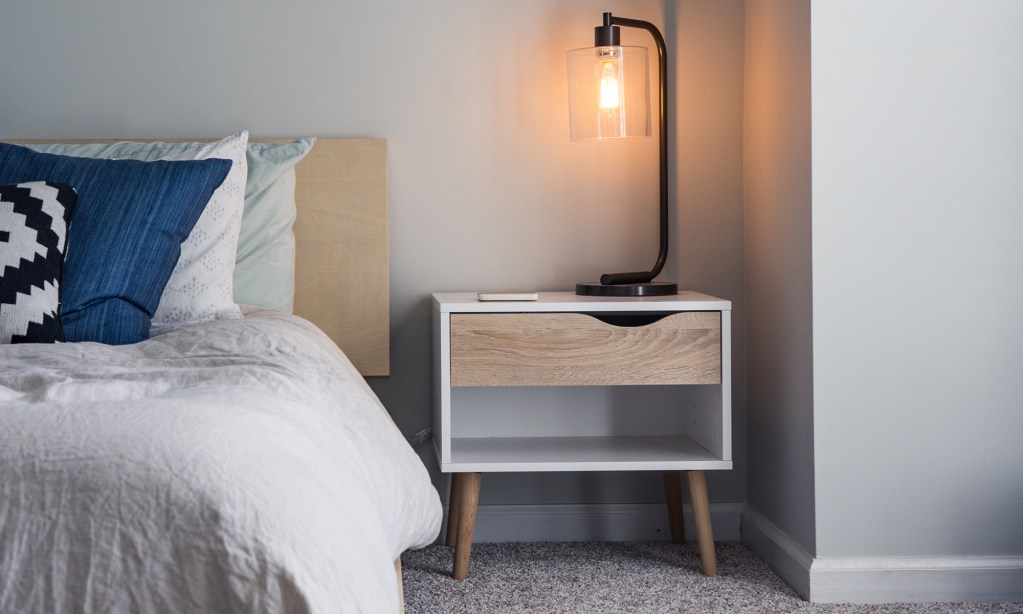
The number one way to help you sleep at night is no lights at all. Blackout curtains are a definitive sleep solution, along with white noise. You’ll find that any light source isn’t part of an ideal design for fully restful sleep, but this may not be an option for you.
If you can’t sleep without light or are looking for the best night light to add to a room, you need to know which colors to avoid and which to invest in. First, if you use fluorescent bulbs, make sure you choose a warm setting. Cold daylight bulbs signal your brain to release serotonin and dopamine, waking your brain. Warmer lights like conventional incandescent or warm fluorescents signal melatonin production instead, helping to promote healthy sleep.
Red light and sleep
Along with warm lighting, red light wavelengths encourage your brain to produce melatonin. This naturally occurring hormone tells your body it’s time to sleep. The darker it gets, the more your body releases to put you into REM and circadian rhythm.
One study found that red light therapy helped improve sleep quality. The participants had a deeper sleep and fell asleep faster, too. If you need lights in your room at night, red LEDs or bulbs are the way to go.
Blue light and sleep
Blue lights are known for keeping people alert by suppressing melatonin production. Blue or cool-toned lighting negatively impacts your sleep and is in many places that we may not even realize. For example, your phone, TV, and other devices produce blue light. Wearing blue light-filtering glasses during the day can help counteract the negative effects this light causes, like disrupted sleep and headaches.
You should also unplug 30 to 60 minutes before bedtime to give your body time to replenish its melatonin stores before it’s time to sleep. You can also activate warm filters or appropriate night lights to mitigate late-night working or scrolling in bed.
Is purple light good for sleep?
We learned in school that purple is a mix of red and blue, so how does that fact translate to your home’s lighting? Does this color help with sleep like red light does, or does it hinder sleep like blue light?
Unfortunately, purple light is not typically recommended for promoting sleep, as it can have a negative impact on our circadian rhythms and sleep patterns. Similar to blue light, purple-colored light is often associated with stimulating or alertness-promoting effects rather than sleep-promoting ones.
Blue and purple lights are rich in short-wavelength blue light, which can suppress the production of melatonin, a hormone that helps regulate sleep-wake cycles. Exposure to blue and purple light, particularly in the evening or at night, can interfere with your ability to fall asleep and stay asleep.
What are the most relaxing light colors?
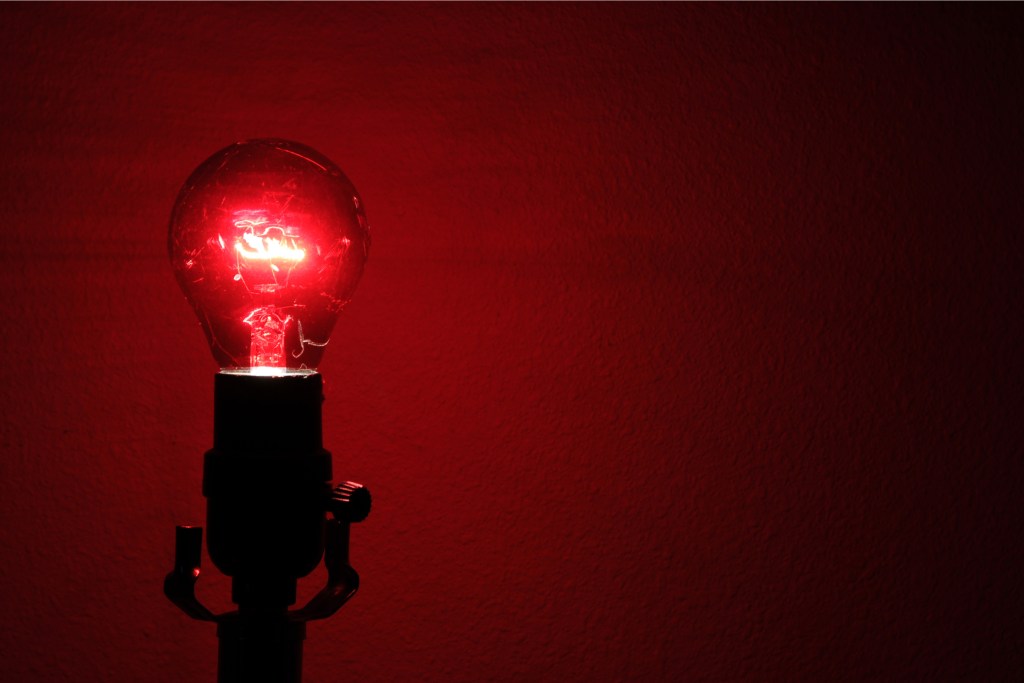
The most relaxing light colors depend on how you plan to relax. Different colors are better for waking up, falling asleep, or entering a meditative state. Relaxing in the morning is different than attempting to fall asleep, so let’s take a deeper look at a few different light colors and their effect on your mental state.
Red light
As discussed above, red lighting is ideal if you need a light at night to unwind. For example, your pre-sleep ritual might involve guided breathing, a white noise exercise, meditation, and so on, this type of light is perfect. If you do bedtime yoga to relax, you obviously can’t do this in the dark, right? Instead, a red light will put you in the right headspace.
Pink light
Consider pink lighting if you need light to wake up in the morning (as most people do), and sunrise is too early. Pink lights are a good color for infants and young children’s rooms. Not only do they add a fairy tale feel to a room, but they’re also calming. If you want a new way to spruce up your yoga spot or favorite napping space, pink lighting can set a relaxing tone, too.
Blue light
Blue lighting is good for certain moods. Although it’s not ideal for resting, blue is a calming color in and of itself. Different LED devices use blue for relaxing light shows. If you like a galaxy or starry sky, blue lighting might put you in the perfect mood for a chill hangout experience.
Green light
Green is a unique color known to improve wakefulness. Many professional gamers use green to help them focus during intensive streaming sessions and important competitions. Green pierces through darkness better than other colors, making it ideal for dark work settings that require energy and attentiveness. If you’re looking at shifting from blue or white light to another focusing color, green may be your go-to.
How to update your lights for better sleep

Once you know what kind of lighting is good for sleep and which colors keep you alert and awake, you can begin updating your bedroom to promote more restful evenings.
Invest in red LED night light bulbs
A simple yet impactful swap would be to replace your bedroom lights with red LED lights meant for nighttime use. Red lights can be added in place of ordinary bulbs. After it gets dark outside, you can turn on the lights to offer your home a gentle red glow. If updating your main light isn’t ideal for your situation—for example, you might wish to stay up past 6 pm in the winter—then consider swapping out a lamp light bulb instead of your main bedroom light.
Get a red night light
Alternatively, you might consider purchasing a red night light. This will offer a bit of light to help you see at night but won’t interfere with your sleep cycle. It is also a great alternative to swapping out ceiling lights.
Consider dimmable lights
If you don’t favor red lights, you might still be able to regulate your sleep cycle with dimmable lighting options. Consider lamps or ceiling lights with a warm yellow or orange glow that can be dimmed as the night goes on.
Additional ideas for better sleep
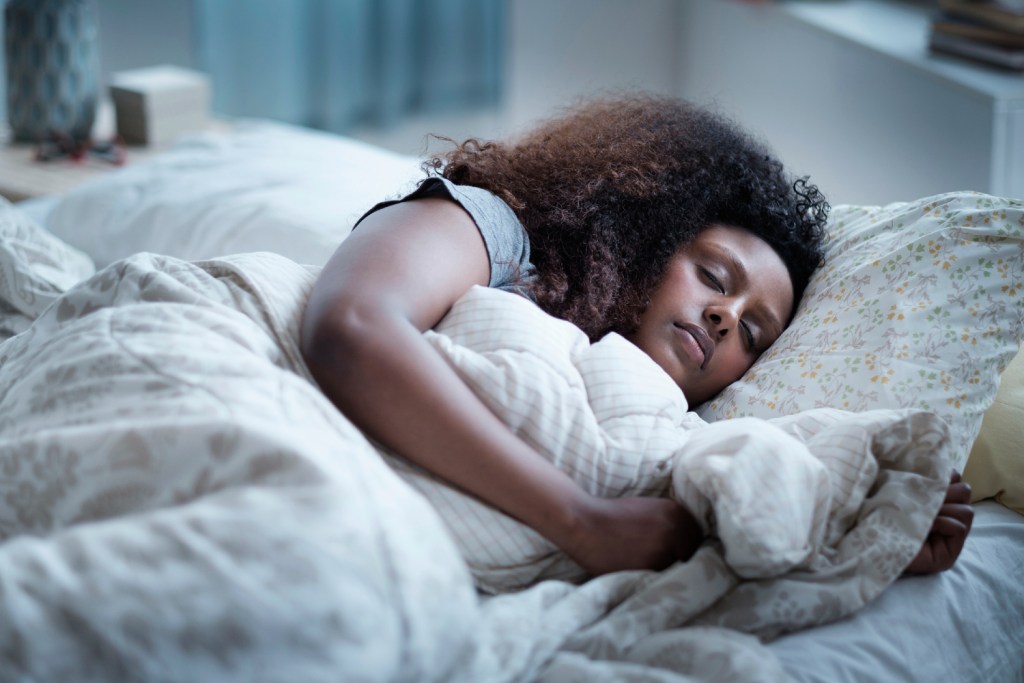
Also keep in mind, regardless of the color you choose, make sure your bedroom is quiet, cool, and dark. If complete silence isn’t your cup of tea, adding a fan or white noise machines can help. Blackout curtains are also a must if you want to sleep late some mornings.
Finally (and this won’t be a popular one), if you let pets or kids sleep in your bed, you will probably wake up during the night from movement. If there’s no wiggle room here, make sure you have a firm mattress that takes some of those movements out.
After reviewing these different color options, you’re ready to make the best decision for your sleep needs. For example, a better night’s sleep may start with covering up or unplugging those blue- and green-lit appliances. Or, perhaps you’ll switch to red lighting when you wind down for the evening. With a bit of trial and error, you’ll be on your way to those important z’s in no time.


